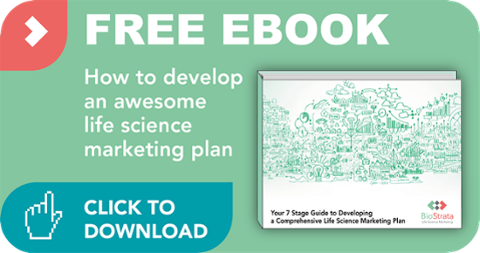Do you know what makes a good story great? It’s not a shiny cover. It’s not hilarious characters. It’s the empathy it evokes in the reader. Being able to show and evoke empathy is a powerful tool for understanding and building relationships. And when it comes to your marketing and communications efforts, it's no different.

To be able to convince a customer or prospect that you empathise with their situation, you need to really understand them. You need to prove to them you are aware of their needs, problems, challenges, goals, frustrations and constraints and demonstrate this across every touch point they have with your brand, from your marketing materials and website through to their interactions with your sales people. This will allow you to build an emotional connection that will lead to action, whether this is purchases, shares, likes or Tweets, which will quickly build brand awareness and drive downstream sales success.
The importance of getting under your customers’ skin
If you want to show empathy, it helps to be familiar with someone’s situation. This means you need to conduct enough research to be able to have that level of knowledge. Imagine you have a new range of microscopes that you want to promote. You’ve decided that the microscopes are going to go primarily to biological research labs and so you start devising a marketing campaign and communications plan, but you’ve skipped the customer insight section.
Your content extols the benefits of the new instrument, e.g. they have all the latest lenses, adjustable stages and a range of available extras. However, upon meeting with the scientists that will be using your product, you quickly discover that resolving power and motorised stages are of little importance. What the majority of researchers want is: better data management software; sharing and collaboration options; and equipment that is exceedingly reliable due to the high level of use it will see. Your equipment just so happens to have all of these features but you haven’t communicated this fact (so they don’t know and aren’t particular excited about your new product). You didn’t take the time to really understand your customer’s needs and pain-points and missed out on the chance to provide them with info that would resonate.
This is just a very generalised example, but it highlights why you need to make the extra effort to learn about the customer, empathise with them and offer solutions and ideas that will make them want to engage with you.
How can you better understand scientific customers?
If you haven’t done so already, start by defining your market offering, detailing why it’s unique and valuable. Having defined your proposition in the form of a brand model, the next stage is to gather relevant information about your prospective customers so you can develop buyer personas for your different audiences. The buyer personas should cover:
- Background, education and career situation
- Job roles and responsibilities
- Their (true) goals and objectives (both primary and secondary)
- Their (true) challenges and frustrations (what holds them back from achieving these goals)
- How you can help (effectively the marketing messages you need to deliver)
- The core benefits you can offer
- Common sales objections they may have
- Proof points you can present to overcome these objections
This information can be gleaned through a variety of methods, but mostly by asking your sales, technical and customer services teams; existing customers; and prospective customers. This can be achieved via online surveys, at user group meetings, with feedback forms and even through online focus groups. All of these will help you to understand what makes your customers tick and how best to empathise with their true goals and challenges.
The impact of life science customer insight
Do you trust the sales person that showers you with technical specifications and features, or the one that asks you what you’re trying to accomplish and how he or she might help? It’s a no-brainer – everyone wants to feel they’re being listened to and not just talked at. Taking the time to understand your customers allows to you genuinely empathise with their situation. From here, you can start creating meaningful marketing and communications strategies that capitalise on this information. This is much more likely to prompt people to engage with you than an uninformed, blanket-style approach to marketing. In addition, you build people’s confidence in you, your knowledge and your brand. This is a great way to keep customers coming back, time and again, as well as having them recommend you to their colleagues.
Whether you’re conducting internal company research, customer feedback surveys or competitor analysis for insight, we have some great information to help guide you. Download our free ebook, ‘Your 7 Stage Guide to Developing an Effective Life Science Marketing & Communications Plan’ to learn more.





